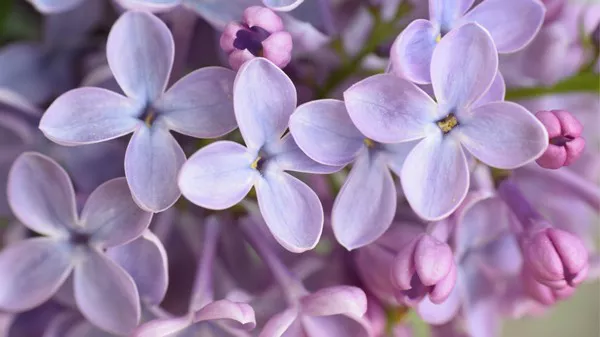The Protea flower, renowned for its captivating beauty and unique appearance, has a rich history that goes beyond its striking petals. Often referred to as the “King of Flowers,” the Protea flower is not just a botanical wonder but also a symbol steeped in meaning and cultural significance. In this article, we will delve into the various dimensions of what the Protea flower means, exploring its symbolism, cultural connections, and its role as a source of inspiration in both nature and art.
Understanding the Protea Flower
Before we explore the deeper meanings of the Protea flower, let’s first understand its botanical characteristics. Protea flowers belong to the Proteaceae family, which is native to the southern hemisphere, particularly in regions of South Africa and Australia. These stunning blooms are renowned for their complex and striking appearance, featuring a sturdy, woody base and a crown of colorful, layered bracts that encircle a cluster of small flowers. The Protea flower’s distinctive appearance immediately captures attention, making it a favorite in both floral arrangements and gardens worldwide.
1. What Does the Protea Flower Mean?
The Protea flower is associated with a myriad of meanings and symbolism. Perhaps one of the most prominent interpretations is that of change and transformation. The Protea’s ability to adapt to its harsh, fire-prone habitat in South Africa has led it to symbolize resilience and the capacity to thrive in adverse conditions. In this context, the Protea flower becomes a beacon of hope and perseverance.
Moreover, the Protea flower is often seen as a symbol of diversity and courage. With its various species showcasing an array of colors, shapes, and sizes, it represents the beauty of embracing differences and celebrating individuality. This aspect of the Protea flower’s symbolism is particularly relevant in today’s multicultural and diverse world.
2. Different Cultural Significance of Protea Flower
The Protea flower has played a significant role in the cultural traditions of the regions where it is native. In South Africa, for instance, the Protea is the national flower and holds a special place in the hearts of the people. It symbolizes both the beauty and strength of the nation. South African cricket teams have even adopted the Protea flower as their emblem, using it as a symbol of national pride and unity.
In Australia, where Protea flowers also thrive, they are cherished for their exotic appeal and are often incorporated into art, fashion, and interior design. The flower’s unique appearance has made it a symbol of originality and artistic expression.
3. Protea Flower in Art and Literature
Beyond its symbolism in culture and nature, the Protea flower has long been a source of inspiration for artists, poets, and writers. Its distinct shape and vibrant colors have been featured in countless paintings, sculptures, and literature, often used as a metaphor for various aspects of life.
In art, the Protea flower has been celebrated for its ability to evoke emotions and tell stories through its petals. Famous artists like Georgia O’Keeffe have depicted the Protea in their works, showcasing its sensuous and captivating qualities.
In literature, the Protea flower has been used as a symbol of beauty and strength. It has been referenced in poems and stories as a representation of resilience and transformation, reminding readers of the enduring power of nature and the human spirit.
4. Protea’s Popularity in Floristry and Weddings
In contemporary times, the Protea flower has experienced a resurgence in popularity, particularly in the world of floristry and weddings. Its unique and eye-catching appearance has made it a sought-after choice for bridal bouquets, centerpieces, and other floral arrangements. Brides often choose Protea flowers not only for their aesthetic appeal but also for the symbolism they carry, representing a resilient and enduring love.
Protea-themed weddings have become a trend, with couples incorporating these flowers into every aspect of their special day, from invitations to decor. The Protea’s versatility allows it to blend seamlessly with various wedding themes, whether rustic, bohemian, or modern.
5. The Symbolism of Protea’s Colors
Beyond the flower’s general symbolism, the color of the Protea can convey additional meaning. Different Protea species come in various colors, each with its own significance:
Pink Protea: Pink Protea flowers are often associated with admiration and gratitude. They make a beautiful choice for expressing appreciation or love.
Red Protea: Red Protea flowers symbolize strength and courage. They can be given as a token of encouragement or to show support during challenging times.
White Protea: White Protea flowers represent purity and new beginnings. They are a popular choice for weddings and celebrations of new life.
Yellow Protea: Yellow Protea flowers signify change and transformation. They are an excellent choice when celebrating personal growth or embarking on a new journey.
Orange Protea: Orange Protea flowers are associated with enthusiasm and energy. They can be given to motivate and uplift someone’s spirits.
Conclusion
In conclusion, the Protea flower is much more than a beautiful bloom; it is a symbol of resilience, diversity, and transformation. Its cultural significance, representation in art and literature, and popularity in modern weddings all underscore its enduring appeal. By understanding the various meanings associated with the Protea flower, we can appreciate its beauty on a deeper level and use it to convey emotions and sentiments in a meaningful way. As we celebrate this captivating flower, let it remind us of the strength and beauty that can emerge from even the harshest of conditions, just like the Protea itself.


